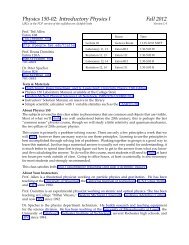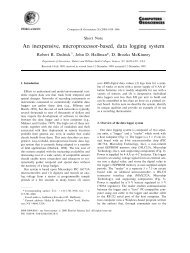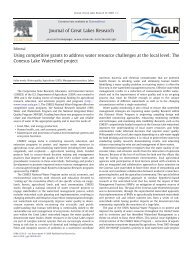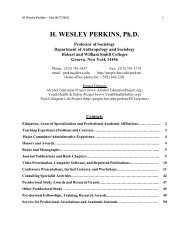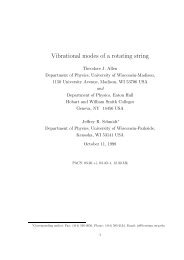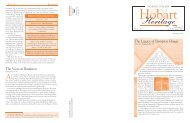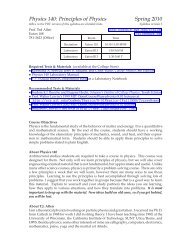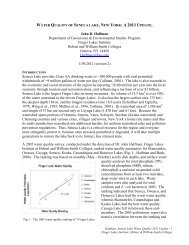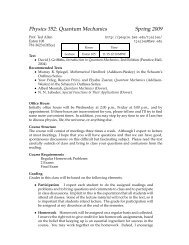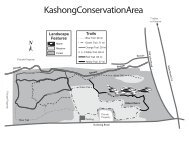Geology of New Zealand Field Trip Guidebook - ResearchGate
Geology of New Zealand Field Trip Guidebook - ResearchGate
Geology of New Zealand Field Trip Guidebook - ResearchGate
Create successful ePaper yourself
Turn your PDF publications into a flip-book with our unique Google optimized e-Paper software.
nourishes some <strong>of</strong> <strong>New</strong> <strong>Zealand</strong>’s largest extant glaciers. These glaciers have waxed and<br />
waned following the beat <strong>of</strong> climate change in the southern Pacific.<br />
Figure 5: The orographic effect <strong>of</strong> the Southern Alps. Peak precipitation can approach 14 m/year!<br />
Note that rainfall is highest on the western side <strong>of</strong> the divide (baseline zero). This precipitation<br />
nourishes glaciers on both sides <strong>of</strong> the divide (data from Lowell et al., 2005).<br />
Unlocking the timing <strong>of</strong> climate change involves dating the waxing and waning <strong>of</strong><br />
glaciers by examining the ages <strong>of</strong> the moraines they left behind as they retreated. Dating<br />
moraines is challenging because there is <strong>of</strong>ten not much in the way <strong>of</strong> organic material<br />
preserved within them, making carbon-14 dating <strong>of</strong> little use. In addition, the youthfulness <strong>of</strong><br />
late Holocene moraines means that they have not yet had time to accumulate significant<br />
quantities <strong>of</strong> cosmogenic radionuclides that can be used to date these deposits.<br />
One technique, known as lichenometry, is both accurate and simple to apply. It is<br />
particularly useful for dating moraines deposited over the last several centuries or so [see<br />
\Lowell, 2005 #4, at the end <strong>of</strong> this guidebook]. Lichen is a microbial community composed<br />
<strong>of</strong> a symbiotic relationship between a fungus and an alga or cyanobacteria. Lichens tolerate<br />
very harsh growing conditions and commonly are the first to colonize rocks in glaciated or<br />
volcanic terrains. Growth rates <strong>of</strong> the crustose lichen Rhizocarpon geographicum vary<br />
greatly (0.02-2 mm/yr) in this area, depending on substrate and available moisture and<br />
individual thalli (the lichen body) <strong>of</strong> R. geographicum appear to live for hundreds <strong>of</strong> years.<br />
The premise behind lichenometry when applied to late Holocene glacial deposits is that<br />
lichens will colonize boulders on a moraine surface shortly after those boulders are deposited.<br />
With time, the diameter <strong>of</strong> the early colonizers will increase and they’ll be joined by new<br />
recruits <strong>of</strong> lichens that will continue to colonize available space on boulder surfaces. Only<br />
those early colonizers have sizes that reflect the total time since moraine formation and it is<br />
those thalli that we will need to find on moraine surfaces.<br />
Lichenometry can provide a means <strong>of</strong> correlating moraines found in nearby valleys,<br />
but its real potential is in dating the age <strong>of</strong> stabilization <strong>of</strong> moraine surfaces. To achieve this<br />
potential, a growth curve needs to be developed for moraines in a region, where conditions<br />
are assumed to be similar, although not constant through time. Lowell and colleagues (2005)<br />
accomplished this by measuring the size <strong>of</strong> R. geographicum thalli on surfaces whose ages<br />
were known by other means (e.g., dendrochronology, radiocarbon dating, or historical<br />
observation). One such growth curve for the Aoraki region is shown in Figure 6.<br />
20




